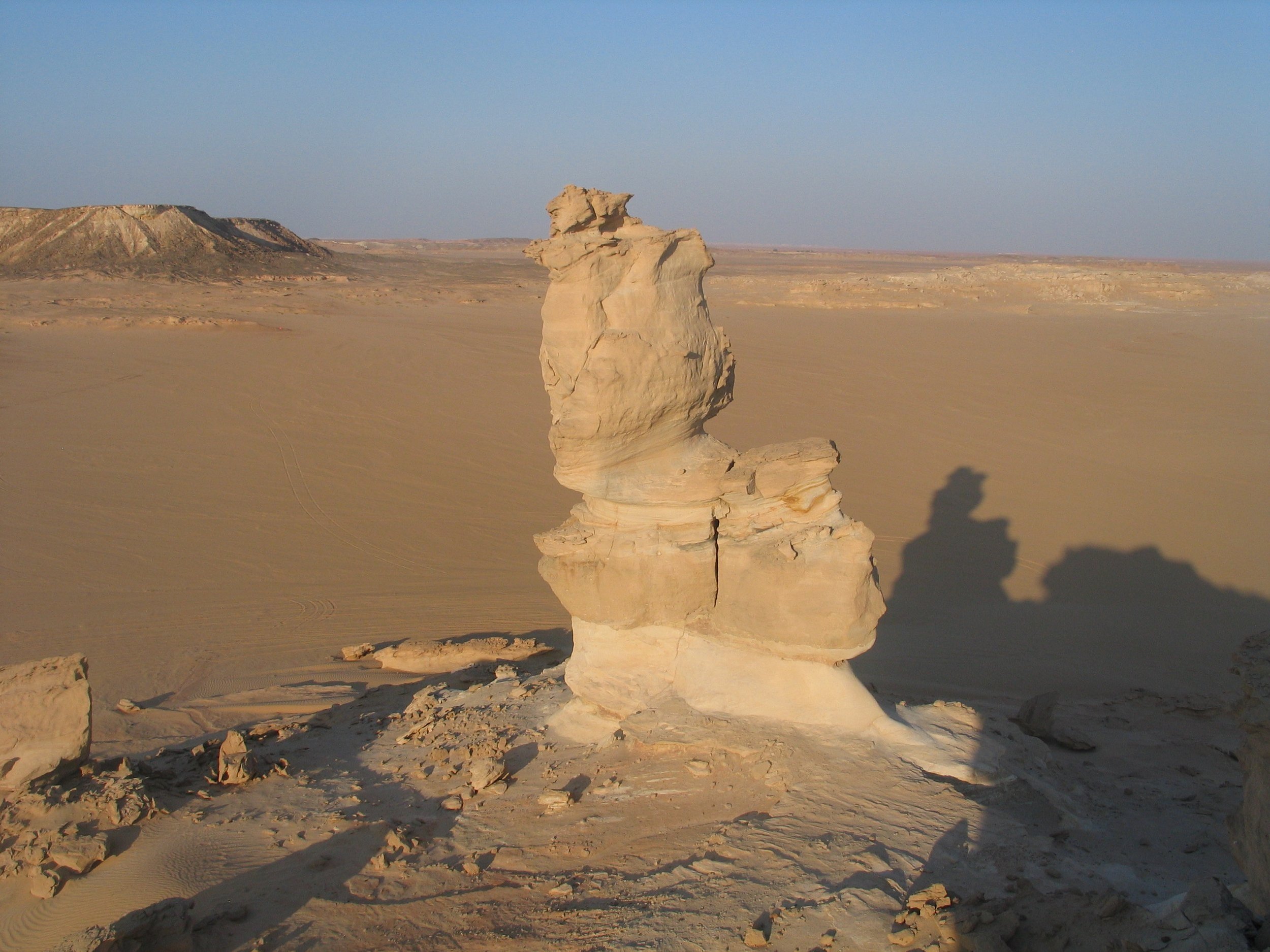
Oldest Arabian glacial rocks?
Glacigene rocks are widespread in the Arabian peninsula, a part of the suite of Permo-Carboniferous glacigene rocks that occur across the former continent of Gondwana. The oldest of these rocks in Oman and Saudi Arabia have long been considered late Carboniferous in age, but new evidence might suggest that they are older, perhaps separated from the main episode of the Gondwana Permo-Carboniferous glaciation by as much as 30 million years.

Hercynian unconformity
Across the Arabian Plate a stratigraphic gap is present within the Palaeozoic, sometimes known as the Hercynian unconformity. In this small article I explain why the Hercynian unconformity is so important geologically and why palynology is useful in identifying the unconformity, and the beds missing because of the unconformity.

Sand connects
Combined fieldwork and palynology of this type in Jordan and Oman in non-marine Permian alluvial flood plain successions of the Umm Irna and Gharif formations has shown how reconstruction of paleoenvironments could help to understand sand connectivity and the lateral persistence of baffles to fluid flow in subsurface sandstone reservoirs.

Dating of zones
The Converrucosisporites confluens Oppel Zone was originally considered middle to late Asselian in age, but this was later revised to latest Asselian to Early Sakmarian. Converrucosisporites confluens is reported here from the Ganigobis Shale Member of Namibia in a well-preserved and diverse assemblage including four of the fourteen specified accessory taxa for the Converrucosisporites confluens Oppel Zone. Ash layer IIb of the Ganigobis Shale Member is radiometrically dated as 302.0 ±3.0 Ma (i.e. Pennsylvanian; Gzhelian or Kasimovian) thus the Converrucosisporites confluens Oppel Zone may range earlier than previously thought.

Ancient pitch
Copepods are abundant, but they fossilize poorly. Their fossil record consists of Cretaceous and Miocene fossils. In this paper we describe abundant copepod fragments that were found in a single pitch clast from a glacial diamictite of late Carboniferous age (c. 303 Ma) from Oman. The geochemistry of the pitch suggests that the pitch came from an oilfield 100–300 km to the southwest, which is consistent with an ice flow direction from glacial striations. The pitch probably originated as an oil seep discharging into a subglacial lake.

Base Triassic Jordan
The Permian-Triassic boundary sections in Jordan are some of the less well known in the world. Here we investigated Upper Permian to Lower Triassic successions exposed in the Al Mamalih area, east of the Dead Sea, which record the transition between the alluvial Umm Irna Formation (Upper Permian) and the overlying shallow marine Ma’in Formation (Lower Triassic). The Permian-Triassic boundary is constrained either within a hiatus represented by a sequence boundary between these formations or within ca 15 m of shallow marine beds overlying the boundary.

Negev Desert
Palynological assemblages from cores 11 to 14 of Makhtesh Qatan-2, core 3 of Ramon-1 and core 3 of Boqer-1 boreholes from the Arqov Formation of the subsurface of the Negev, suggest that at least part of the Arqov Formation is Changhsingian in age.












